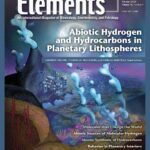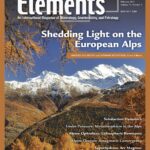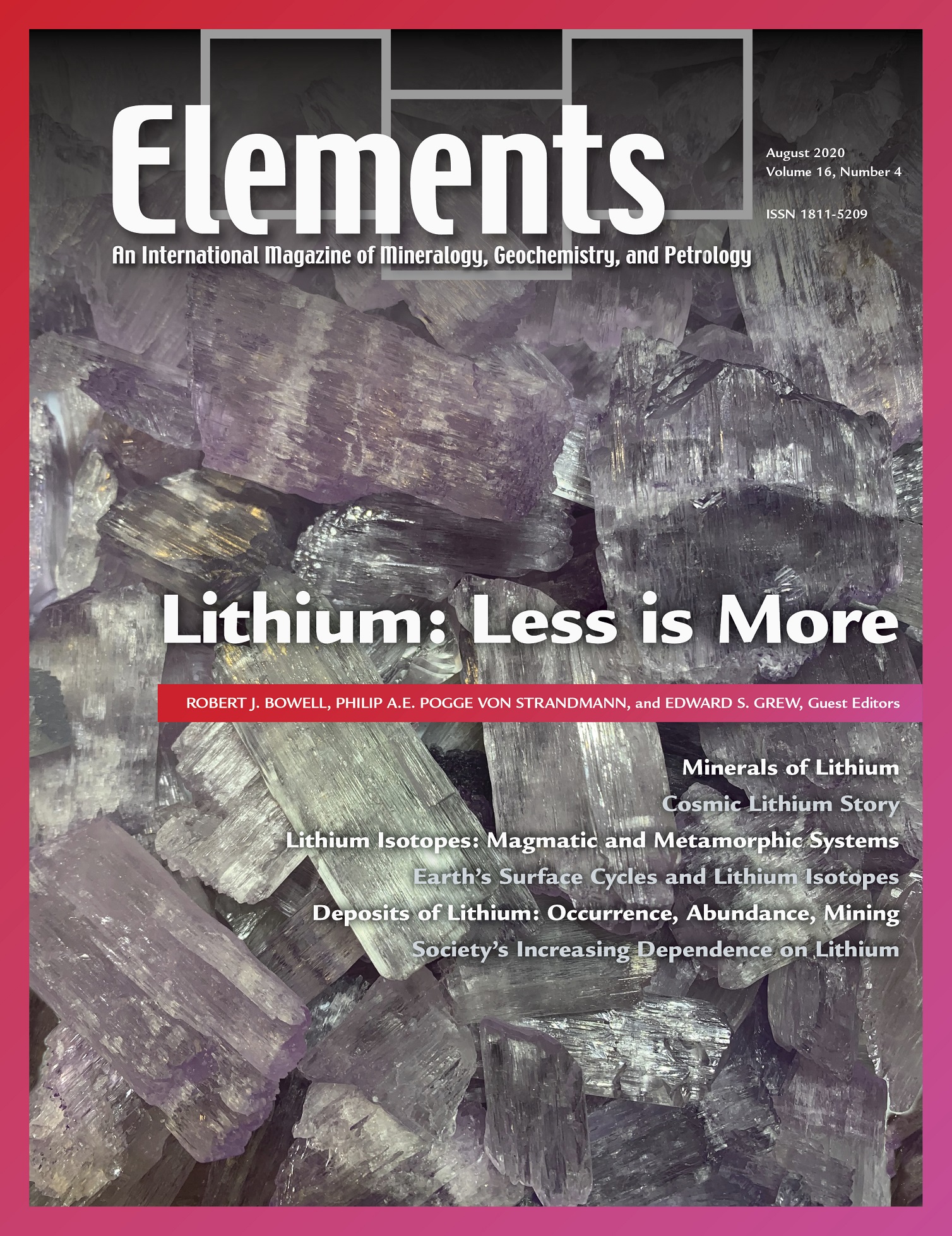
Abiotic Hydrogen And Hydrocarbons In Planetary Lithospheres, February 2020, Vol. 16, No. 1
June 28, 2024
Shedding Light On The European Alps, February 2021, Vol. 17, No. 1
June 28, 2024Lithium: Less Is More, August 2020, Vol. 16, No. 4
$20.00
Lithium is concentrated in Earth’s upper continental crust and is an essential constituent of 122 mineral species with the greatest mineralogical diversity found in pegmatites. Lithium occurs naturally in two isotopes, 6Li and 7Li, which are readily fractionated, thus becoming sensitive to geological and environmental processes.
Lithium: Less Is More
August 2020, Vol. 16, No. 4
Lithium is concentrated in Earth’s upper continental crust and is an essential constituent of 122 mineral species with the greatest mineralogical diversity found in pegmatites. Lithium occurs naturally in two isotopes, 6Li and 7Li, which are readily fractionated, thus becoming sensitive to geological and environmental processes. Closed-basin brines (58%) and pegmatites plus related granites (26%) constitute the main sources of exploitable lithium worldwide. Rechargeable batteries that take advantage of lithium’s light weight and high electrochemical potential offer the greatest potential benefit to the most people. Lithium compounds are also used to control bipolar disorder. In a word, life as we know it at the start of the 21st century would not be possible without lithium.
Why You’ll Love Elements Magazine:
- Expert Contributors: Articles written by renowned researchers in the field of geoscience.
- Engaging Content: Join a community of readers who are passionate about Elements.
- Exceptional Quality: Each issue is printed on high-quality paper with stunning visuals and detailed illustrations that bring complex scientific concepts to life.
Order your copy of the August 2020 issue of Elements magazine today and discover lithium: less is more.
Related products
-
Frontiers In Textural And Microgeochemical Analysis, August 2007, Vol. 3, No. 4
$20.00Recent advances have been made in high-resolution in situ methods to image mineral growth patterns, analyse compositional and isotopic zonation, and improve our ability to visualize, study, and model rock textures in three dimensions. These advances provide a significant step forward in the understanding of how rocks form and the history they can tell us.
-
Phosphates And Global Sustainability, April 2008, Vol. 4, No. 2
$20.00Phosphorus is a unique element: it is essential to the existence of all living forms, and as such controls biological productivity in many terrestrial and marine environments; but when in excess, it leads to uncontrollable biological growth and water-quality problems. This has become a common environmental issue, resulting from our careless use of phosphorus in agriculture, yet phosphate ore deposits, from which fertilizers are produced, are a finite natural resource.
-
Early Earth, August 2006, Vol. 2, No. 4
$20.00The earliest Earth was a strange inhospitable world, yet transitions occurred culminating in the evolution of life within the first billion years. The preservation of a sparse and ambiguous rock record has encouraged debate.




